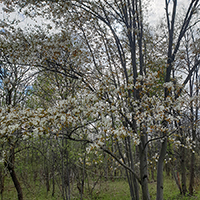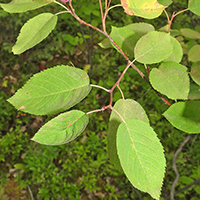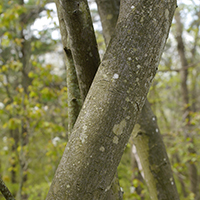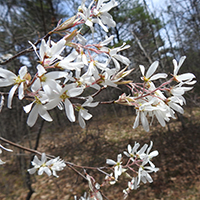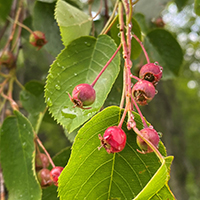What serviceberries look like
Size and shape
- Up to 12 metres tall.
- Often multi-trunked.
Bark
- Smooth grey bark.
Leaves
- Oval or round leaves (less than 8 centimetres long).
- Fine teeth on the edges.
Flowers
- Clusters of white flowers bloom in the spring.
Fruit
- Small red berries ripen in early to mid-summer.
Where serviceberries are found
Serviceberries are a group of similar species found throughout Ontario, as far north as James Bay.
Tree-sized species include Saskatoon serviceberry (A. alnifolia) found near the Ontario-Manitoba border, downy serviceberry (A. arborea) native to southwestern Ontario, and smooth serviceberry (A. laevis) found from Southern Ontario north to Lake Superior.
What you need to know to grow serviceberries
- Moisture: moist to dry soil.
- Soil: adaptable to all but waterlogged sites.
- Shade: partial shade to full sun.
Benefits and uses of serviceberries
Wildlife benefits
- Serviceberries bloom in May and June and are a food source for pollinators.
- A variety of bird and small mammal species consume serviceberry fruits.
Commercial uses
- Serviceberry fruits are edible and can be used in baking, jams and wine.
- Serviceberries offer pretty flowers, berries and fall foliage. They are an excellent choice for landscaping as single trees or hedges.
- Due to its size, serviceberry wood is not popular for commercial products. However, its hard wood can be used for small woodworking projects.
Fun facts about serviceberries
- Serviceberries transplant easily due to their fibrous root systems.
Updated: January 10, 2024
Published: July 18, 2014
